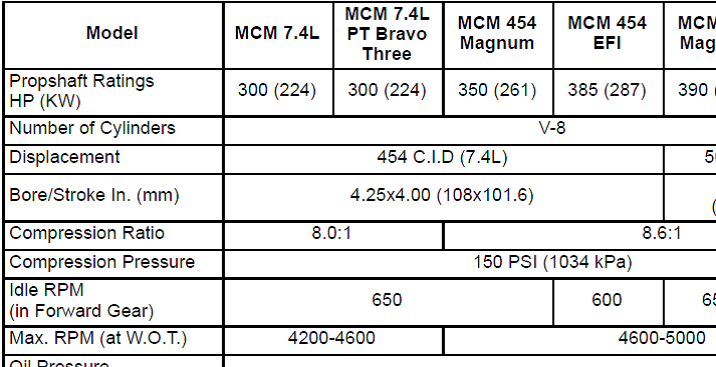Congrats mate , you just really moved forward !!
Ok , we can really close any fuel delivery discussion because now we know for sure its not the case .
Cap , rotor , pickup coil : do it only if you have the old parts . Very unprobably since the engine starts and idles fine and does not misfire or similar . You also told the plugs look normal.
Ignition advance module : worth a shot but your diagnosis scan tells us the advance works .
You,re sure you have no leak / false air on the intake ?
Your manifold reading at idle is indeed odd . Spray at idle some carb cleaner around the intake ( not into the flame arrestor ) - if the engine reacts you have an intake leak .
Finally : I know its not what you want to hear but it more and more boils down to a mechanically shot or at least damaged engine . A good cylinder leak down test is now really in order to judge mechanical condition.
Put the boat for sale on ebay etc. regardless what the broker predicts and keep an eye if you somewhere can get an used block . It will not hurt whatever further work you perform on it.
Ok , we can really close any fuel delivery discussion because now we know for sure its not the case .
Cap , rotor , pickup coil : do it only if you have the old parts . Very unprobably since the engine starts and idles fine and does not misfire or similar . You also told the plugs look normal.
Ignition advance module : worth a shot but your diagnosis scan tells us the advance works .
You,re sure you have no leak / false air on the intake ?
Your manifold reading at idle is indeed odd . Spray at idle some carb cleaner around the intake ( not into the flame arrestor ) - if the engine reacts you have an intake leak .
Finally : I know its not what you want to hear but it more and more boils down to a mechanically shot or at least damaged engine . A good cylinder leak down test is now really in order to judge mechanical condition.
Put the boat for sale on ebay etc. regardless what the broker predicts and keep an eye if you somewhere can get an used block . It will not hurt whatever further work you perform on it.




